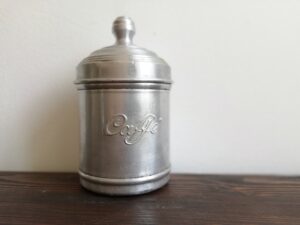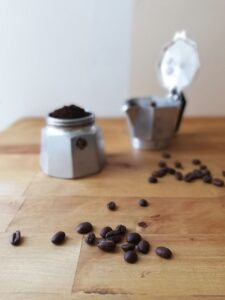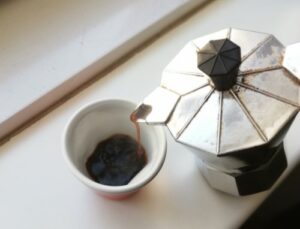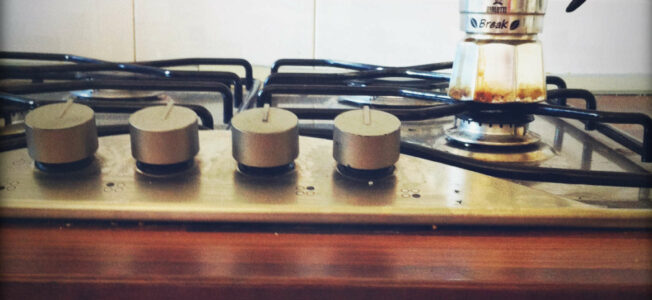 When it comes to Italian food culture, one thing I am particularly proud of is, of course, coffee.
When it comes to Italian food culture, one thing I am particularly proud of is, of course, coffee.
Growing up in Turin, coffee has always been an indispensable part of my life, not only because of its delicious taste and smell or because it kept me awake during the day (or night), but also because it accompanied precious moments of my everyday life.
Coffee is the gentle alarm in the morning that makes it a little bit easier to get out of bed and start the day. It is the most welcoming break after the first few hours of work or school when you feel like you are not quite awake yet. It is the savior after a good (but heavy) meal and it is the much needed energizer that just keeps you going when you feel like giving up.
As you can see, coffee is so much more than a brewed drink and, as I now live in Vienna, it has become necessary for me to keep my traditions and, most importantly, these precious moments alive.
Of course, it is never good to generalize and Vienna, like any other city, has its own coffee culture and traditions. But if I am being totally honest, it is rare for someone that has a culture so different than my own to prepare the coffee that I love.
I think everybody will agree with me when I say that Italians can be very annoying when it comes to coffee. They think theirs is the best in the world. I think my coffee is the best in the world. So passionate are we about coffee that it is safe to assume that, whenever an Americano is made, an Italian dies.
Please, don’t take this the wrong way! I am sure YOUR coffee is delicious! You have to understand, however, that the relationship between Italians and their coffee is so very special. Forgive them, they don’t mean to be rude, they’re just picky and for good reasons.
So! If you are interested in exploring the magic world of coffee with me and to make your Italian friends very happy the next time you plan to invite them over, here’s a few tips and tricks for you!
1st step: quality
It seems unnecessary but I’ll say it nevertheless. The quality of your coffee does make the difference. My suggestion to you then is: investigate! Ask your Italian friends what they usually buy and like, try it out yourself and see if you like it. Depending on your budget, you can try the Italian brands you find at the supermarket (the real ones, not the ones that pretend to be Italian) or you can pick a fancy one from a smaller company directly at the coffee shop.
2nd step: type of coffee 
Commonly, there are two coffee bean types: arabica and robusta. Usually the arabica is considered the most refined of the two and for that reason you will find a higher percentage of arabica blend on the market. The taste is usually sweet, soft and aromatic. The only disadvantage of this type of bean is that it is more acidic. So, if you are sensitive, make sure to never drink it on an empty stomach and to always drink a glass of water afterwards.
The robusta, on the other hand, has, as the name suggests, a stronger taste, is usually bitter and creamier.
3rd step: la moca
Italians tend to prefer famous brands like Bialetti for their coffee. My experience is that you don’t necessarily need a Bialetti to make a good coffee. Smaller brands will do just fine. Just make sure not to buy the cheapest one and if you just bought a new one, be patient with it, the coffee will start to taste good after a few tries. Also, never wash your moca with soap, only water.
4th step: getting started – water
I’ve once heard a rumor about using hot instead of cold water. Personally, I don’t think it will make such a strong difference but again, the solution often lies right in the middle: try room temperature water. That is usually the best temperature for almost everything.
More important than having the right temperature, however, is having the right amount of water. Believe me, it makes a huge difference! If you look inside the bottom part of your moca you will find inside a small valve. The water should reach the middle of the valve. That way, once you add the filter, the water should be enough to reach it but not too much to pour out of it. If water pours out of the filter it means that you put too much water. However, to be extra sure that you are using the right amount of water, try this: you put in the filter before adding the water; you add water till it pours a little out of the filter; you remove it (as quickly as possible) and let the remaining water drop out of the filter; you put it back and if there’s still water pouring out, you do the process one more time, if not, you’re good to go!
5th step: getting started – coffee
 The amount of ground coffee is also very important but also very personal because it depends on how strong you want your coffee to be. To see where you’re at, compare it with a gin and tonic, how much alcohol do you want? If you just want to get wasted then you already know the answer. If you plan on reaching a state of inebriation, yet want to enjoy your drink at the same time, then you should probably go easy on the gin. The important thing is that you use a small spoon and that you DO NOT FLATTEN, I REPEAT, DO NOT FLATTEN the coffee. Regardless of how strong you want your coffee, it should be more than the limit of your filter. Try to always put the coffee in the middle so as to create a little mountain inside the filter, or, if you are afraid to spill it, just move it around a little with your spoon. Now your coffee is ready to go!
The amount of ground coffee is also very important but also very personal because it depends on how strong you want your coffee to be. To see where you’re at, compare it with a gin and tonic, how much alcohol do you want? If you just want to get wasted then you already know the answer. If you plan on reaching a state of inebriation, yet want to enjoy your drink at the same time, then you should probably go easy on the gin. The important thing is that you use a small spoon and that you DO NOT FLATTEN, I REPEAT, DO NOT FLATTEN the coffee. Regardless of how strong you want your coffee, it should be more than the limit of your filter. Try to always put the coffee in the middle so as to create a little mountain inside the filter, or, if you are afraid to spill it, just move it around a little with your spoon. Now your coffee is ready to go!
6th step: boiling
It goes without saying that the longer the boiling time, the better your coffee will taste. So, make sure to boil over low heat. Also, many Italians leave the moca‘s spout open so that no additional water goes into the coffee, since a few drops of extra water can make the difference. However, since water takes longer to boil if you leave the spout over, you can also choose to close it and remind yourself of those little few extra drops of water when you prepare your moca.
7th step: almost done!
Once you hear a bubbling noise your coffee will be ready to serve! But before you do that, make sure to stir the coffee, otherwise, those you are serving first will have a weaker coffee, whereas the coffee on the bottom of your moca will remain more dense.

And now, enjoy!


